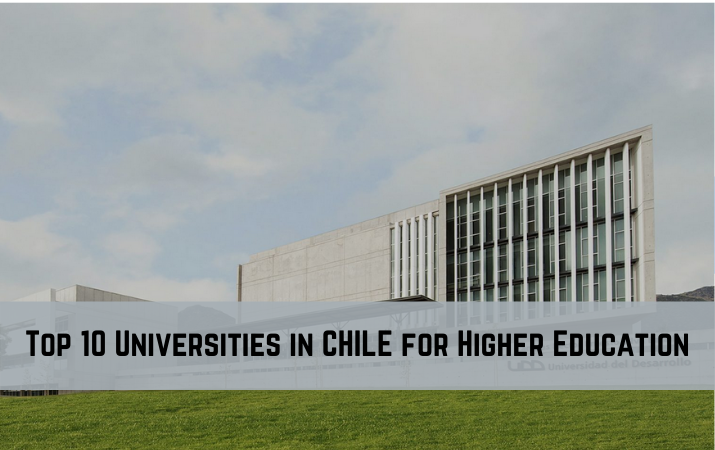Students choice of selecting a university abroad depends heavily on the employability opportunities. Every year “The Times Higher Education” releases ranking list for universities around the world. The ranking is based on 13 performance indicators which measure the institution’s performance across teaching, research, knowledge transfer and international outlook.
The list is prepared after compiling answers of several recruiters, chief executives and business managers from top companies in 20 countries.
Let us have a look at the list “Top 10 Universities in Chile for Higher Education for the year 2020”
University of Desarrollo
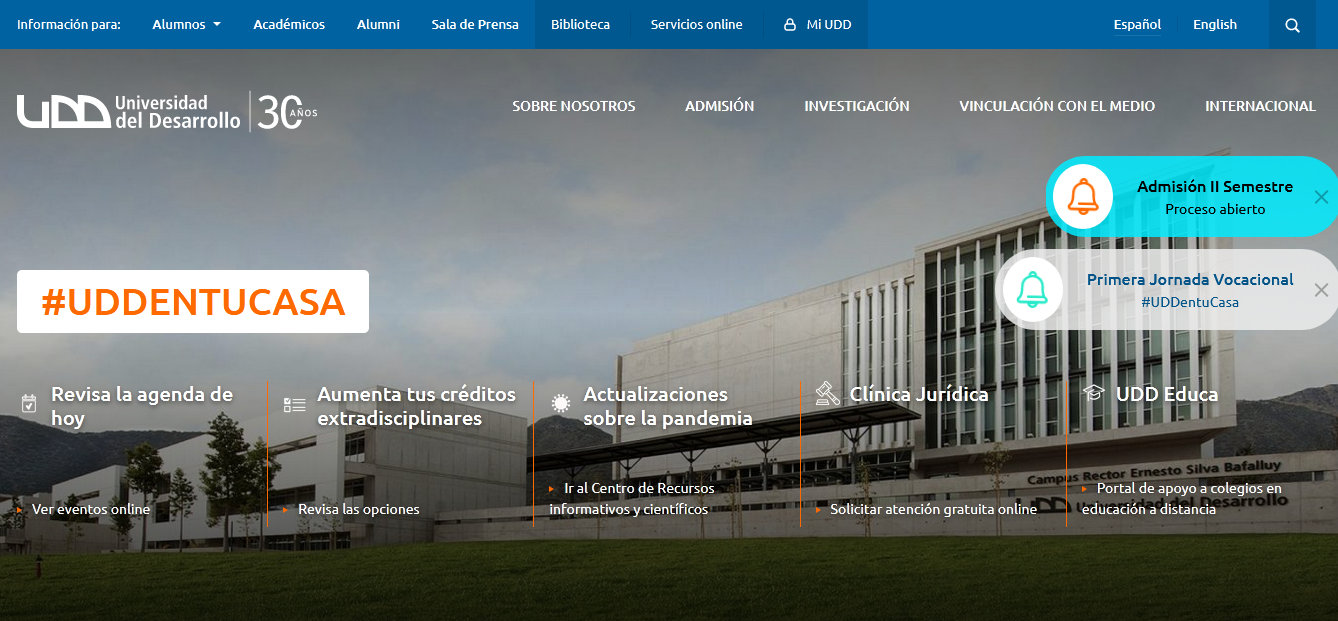
Universidad del Desarrollo (UDD) is currently an institution aligned with the important challenge of promoting scientific activity. UDD is becoming a complex university with a high regard for research, now and in prospect to the future. Thus, we must demonstrate the corresponding commitment with our UDD core value of public responsibility by contributing with solutions to the problems relevant to society, with guarantees of quality, security and efficacy.
UDD is a small, dynamic and very young university, and we see these characteristics as an advantage that enable us to be flexible and nimble in our organizational processes. In order to keep moving forward, we are not only incentivizing our researchers to become involved in high impact research, but also to adapt effectively in a dynamic international context in order to attract collaboration from all over the world. Our aim is to achieve strategic alliances with international centers that have a high level of scientific productivity and impact in innovation.

Founded in 1982, Diego Portales University is one of the first private institutions in Chile. It is amongst the country’s top universities in law, architecture, education, psychology and journalism.
Its degrees are structured across the Schools of Architecture, Art and Design, Medicine School, Health and Dentistry, Social Sciences and History, Communication and Literature, Law, Economics and Business, Education, Engineering, and Psychology schools.
Diego Portales’s main campus is located in Santiago’s historical centre. The Economics and Business School is further away, in the business area of the city called Ciudad Empresarial, in Greater Santiago. The university’s impressive architecture, inspired by Brutalism, was designed by a team of architects teaching at DPU’s Architecture, Art and Design School. The architecture is meant to foster and encourage social and cultural life in the university.
DPU has connections with prestigious institutions such as Yale University, the Massachusetts Institute of Technology (MIT), Columbia University, Leiden University, University of Sao Paolo and others.
As a capital city, Santiago has an array of cultural activities to offer including the International Theatre Festival Santiago a Mil, the jazz festivals Lollapalooza and the Maquinaria festival, as well as regular events at cultural centres, theatres, cinemas, concert halls and opera and ballet theatre halls. If you’re in the main campus of Diego Portales, you will be based in immediate vicinity to the national library as well as most museums, including the National History Museum, the Museum of Contemporary Art, the Museum of Pre-Columbian Art, the Colonial Museum and the Museum of Santiago.
Pontifical Catholic University of Chile
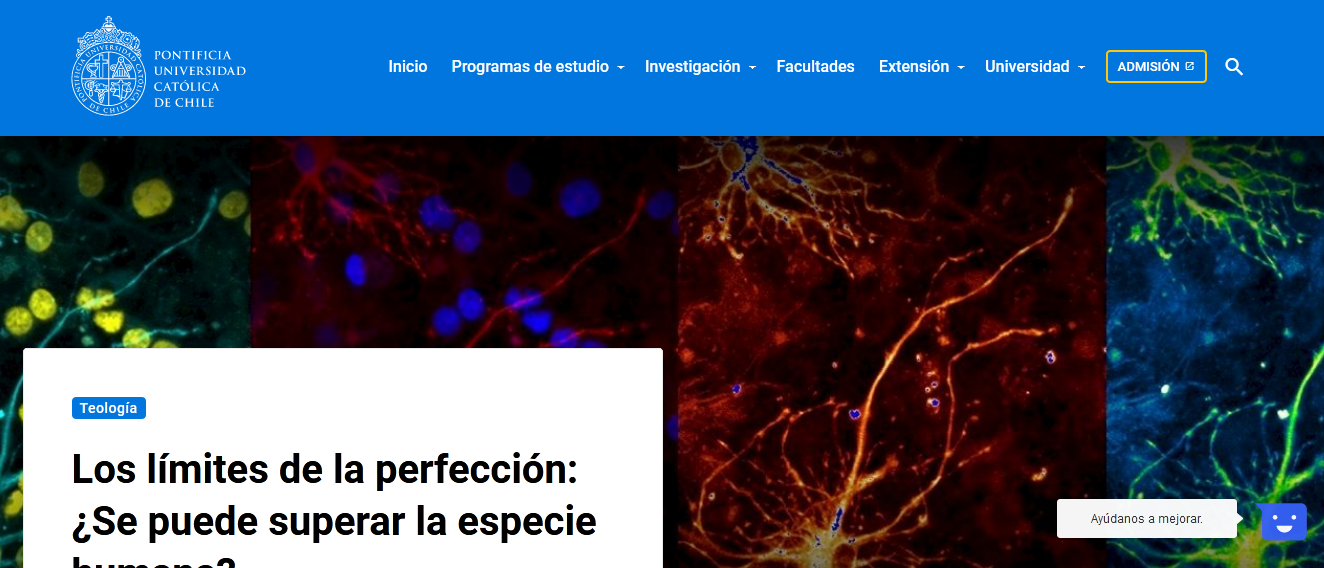
The Pontifical Catholic University of Chile is regarded as one of the best universities in South America.
Established in 1888 by the then archbishop of Santiago and receiving the blessing of Pope Leo XIII a year later, UC is one of six private Catholic institutions in the country.
Originally teaching law, mathematics, legal sciences and physical sciences, its Faculty of Theology was created in 1935, and it later made courses in available in subjects like philosophy, commerce, education sciences and technology.
With four of its campuses based in Santiago, Chile’s capital and most populous city, and the fifth is located in Villarrica next to the city’s eponymous lake, UC hosts an increasing number of international students and develops a significant proportion of the nation’s research.
UC’s growth and success in some ways epitomises Chile’s rise since its 18 years of military dictatorship came to an end in 1990. Now attracting more applicants than any of the country’s other universities, UC has even topped South American league tables as well as performing outstandingly in subject rankings for mathematics, physics and economics and management.
Santiago is relatively safe, has the second biggest metro system in Latin America – with more than 100 stations – and is a relatively affordable place compared to most capital cities in Europe and North America. Its highlights include views of the Andes, several scenic parks, a buzzing nightlife and a booming arts scene.
Its alumni include former presidents of Chile Sebastian Piñera and Eduardo Frei Montalva.
University of Chile
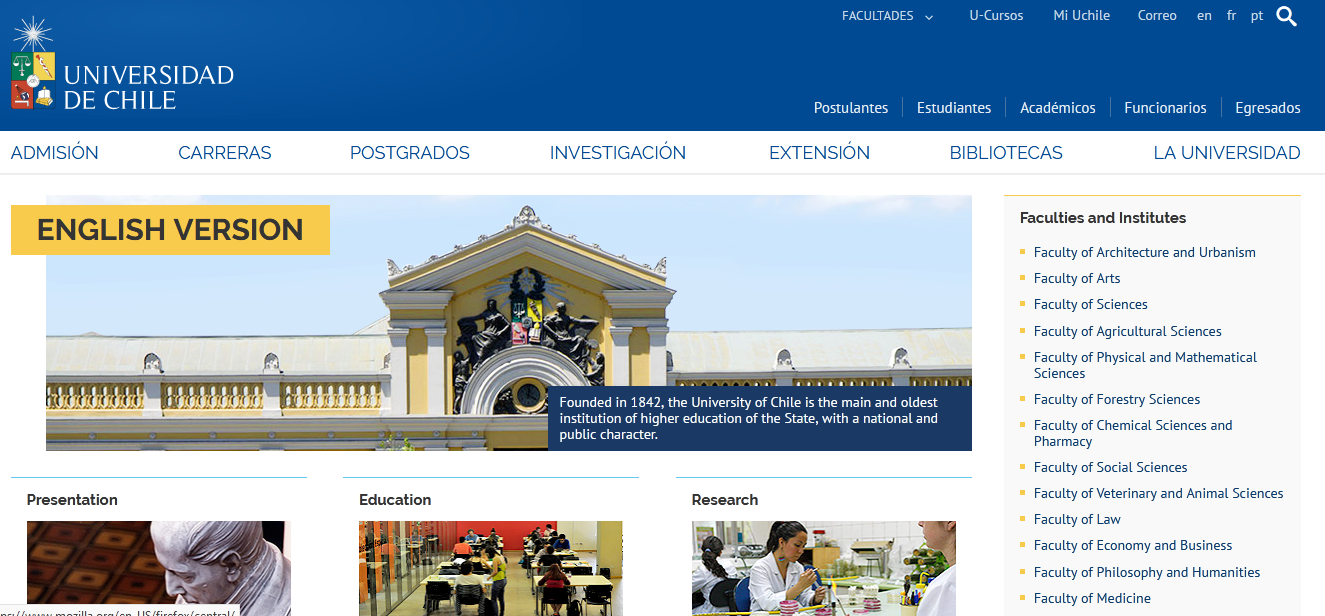
The University of Chile, based in the capital city of Santiago, is the oldest in the country, and one of the most prestigious in the region.
Through its research, teaching and innovation across sciences and arts, the university aims to tackle national and regional issues in society. It was founded with a view to promote democracy, science and technological development, and social mobility.
There are five campuses containing many research centres, museums, health centres and sports facilities.
The health facilities include a clinical hospital and research laboratories, serving the public as well as pioneering medical research and providing opportunities for students.
One of the first astronomy observatories in Latin America – The National Astronomy Observatory founded in 1852 – belongs to the university.
On the campus, sports facilities are available both to students and staff. Interfaculty sports competitions take place all through the year.
Among the notable alumni are two Nobel laureates – poets Pablo Neruda and Gabriela Mistral – and 20 presidents of Chile.
The university is organised into 14 faculties and 4 interdisciplinary institutes, offering a total of undergraduate 66 programmes, 36 doctoral programmes, 119 master’s programmes and other specialised courses.
In addition to an exam for applicants, the university also offers separate admission routes to outstanding athletes, blind students and other specified groups.
A third of all scientific publications in the country are associated with the university. Currently there are ongoing research projects in education, health, engineering and agriculture.
The most iconic building belonging to the university is Main House, designed in a neoclassical style in 1872.
Federico Santa María Technical University
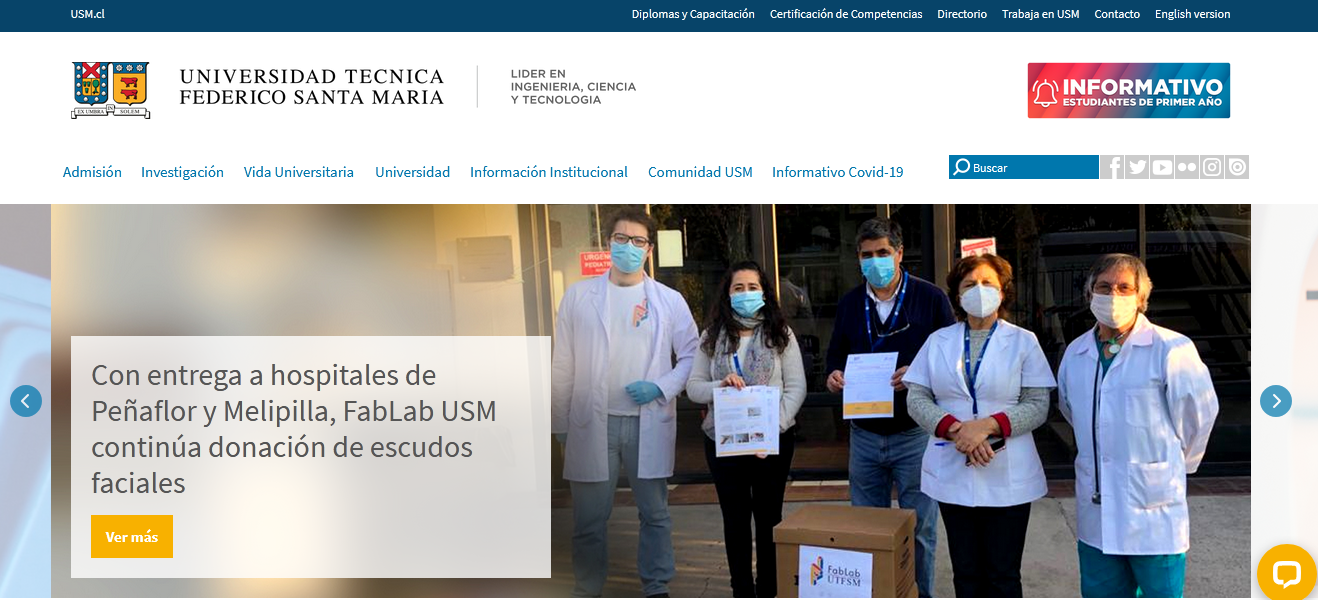
The Federico Santa María Technical University (USM) was founded in 1926 in Valparaiso, a city on the Chilean coast.
The university is named after its founder, who left his fortune to be used to build a university in his hometown of Valparaiso. Over the years since its founding the number of campuses has grown and today there are five campuses in 4 of the main cities of Chile, Valparaiso, Santiago, Concepción and Viña del Mar.
The university was recognized in 2017 has the first place in Latin America in Engineering and Technology, and in 2018 in second place in the region ( Times Higher World University Ranking by Subject) and has the biggest engineering School in Chile.
Besides being known as one of the best Engineering Schools in Latin America, its Valparaiso Campus was awarded as the second most beautiful university campus in Latin America.
USM prides itself on attracting students from some of the poorest areas of Latin America although it is one of the most highly selective institution in Latin America, participating in degree courses that are among some of the most rigorous in the region. USM also receives every semester a large number of exchange students from some of the most selective Universities in the world.
The university primarily offers bachelor’s degrees, with undergraduates making up around 95 per cent of the total student population.
There are 16 university departments offering a wide range of courses, although the majority are subdivisions of engineering, technology, there is a Business School, Arquitecture, Product Design and Sciences, there are several Phd programs including Biotechnology, Mathematics, Physics, Computer Sciences and many engineering fields.
Each year USM holds the university graduation ceremony on the same date, December 20, in commemoration of the death of the university’s founder.
Students and alumni are known as “Sansanos”, and among the former USM students are poet Raul Zurita, who won the 2000 Chilean National Prize for Literature, composer Abelardo Quinteros and mathematician Robert Frucht.

First established in 1989, the University of the Andes, Chile is a private research institution located in the Chilean capital, Santiago.
The university has expanded greatly since its initial conception, and since it relocated to its current site in 1995. The university can now be found on a 128-acre campus at the foot of the Andes mountain range, playing host to a wide range of academic and recreation facilities for students to enjoy. This includes a large modern library with over 300,000 books, an art museum, nearly 40 science labs, three sports fields, a gymnasium and a dedicated medical clinic for students.
The campus is also located close to the city of Santiago itself. As Chile’s economic and cultural heart, the city has a huge amount to offer prospective students.
Having been founded during Chile’s colonial era, Santiago is home to a huge variety of stunning architecture, alongside a vibrant community and active nightlife. The city is also within easy travelling distance of both the Pacific Ocean and the Andes mountains, providing wonderful opportunities for students to explore the wider country in their free time.
The university offers both undergraduate and postgraduate programmes for study, divided among several departments. These include health, engineering, education, humanities and communication. Students of medicine have access to the San Bernardo Medical Centre, an outpatient medical facility providing tuition and accommodation for medical students of all kinds.
Notable alumni of the university include Kai Horwitz, an Olympic alpine skier representing Chile.
Andrés Bello University (UNAB)
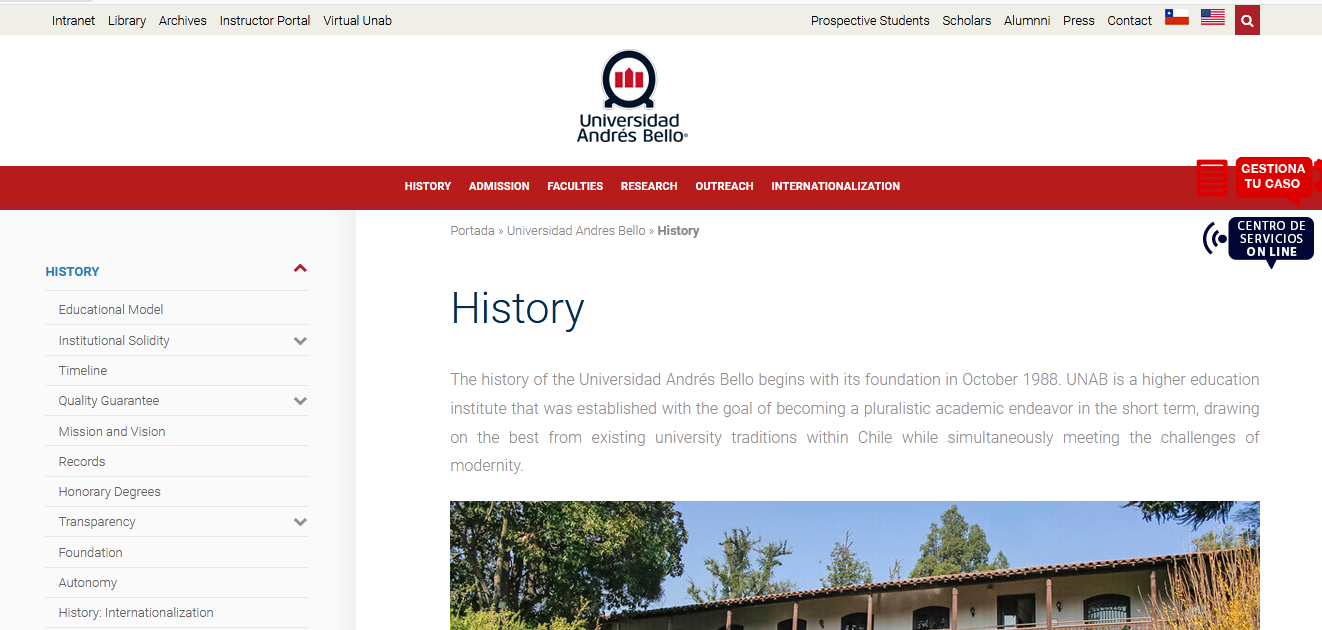
The Andrés Bello National University (UNAB) was created in 1988 and is spread across three campuses in three areas: Santiago, the capital of Chile, the coastal city of Viña del Mar and the southern city of Concepción.
UNAB was the first non-traditional private university in Chile to receive accreditation in research, it is also renowned for its accredited doctoral and health sciences programmes, medical school and Millennium Research Centre.
Students can choose to study undergraduate and graduate degrees in architecture and design, business administration, communication, ecology and natural resources, education, engineering and information technology, health sciences, hospitality, human sciences, law and maritime studies. There are health, legal, dental and psychology clinics for all affiliated staff and students.
The Marine Research Centre at UNAB (based in Quintay) is Chile’s leading provider of sea urchin seeds, which are collected to grow in captivity with the potential of selling these services to the private sector. Experts say this industry could become an equivalent to salmon farming in its success levels.
It is a member of the Laureate International Universities group, the largest global network of private degree-granting higher education institutions. 2017 figures suggest that the student body is made up 36,000 undergraduates, 2,600 graduate students and 3,000 faculty members.
UNAB leads and organises several social responsibility schemes including the UN Global Impact Executive Office and the Centre for Sustainability. It is part of the YouthActionNet Chile programme which, in collaboration with the International Youth Foundation, identifies and supports accomplished social entrepreneurs from the ages of 18 to 29 in Chile.
Austral University of Chile
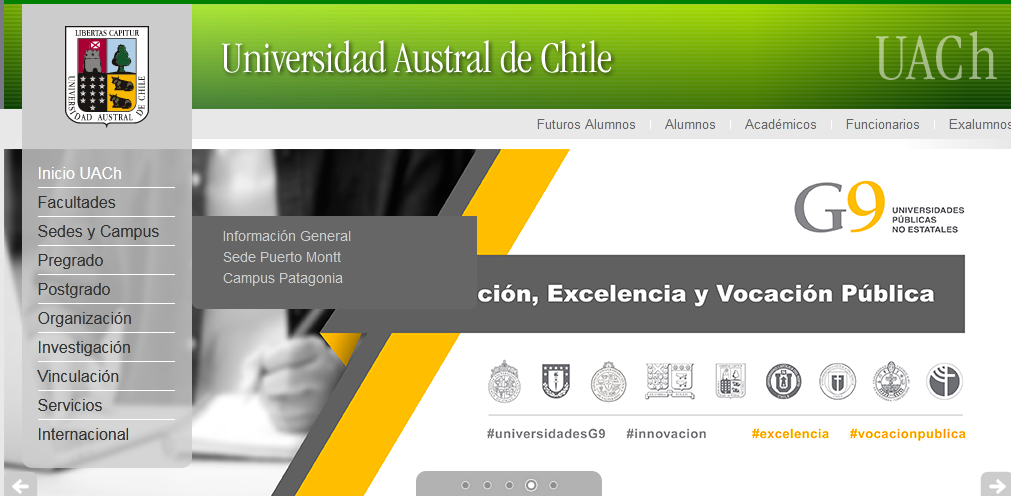
Austral University of Chile (UACh) was founded in Valdivia in 1954 in response to the requirements of the city’s community for a college that could receive the region’s youth. In the community’s vision, the college was also meant to meet the urgent development needs of the growing industry, commerce and agriculture and enrich with education and health services the culture of the south. The university was thus inspired from its beginnings by the model of a regional university with a national and international vocation, given the nature of the studies and the scientific and technological research that characterises it at present. Highly professional training and teaching at undergraduate and graduate level, quality scientific and applied research and the dissemination of culture, mainly in arts and letters, have been the cardinal points on which the structure and the educational network of Austral University of Chile is set. Currently UACh can be defined as a complex, comprehensive university where all scientific, technological and humanistic disciplines are taught.
The University of Bío-Bío (UBB) is a public university located in the city of Concepcion in Chile. It is a member of the Chilean Traditional Universities.
The founding of the institution is rooted in the establishment of the State Technical University (UTE) in 1947. The Concepcion campus of this institute later became the early incarnation of the University of Bío-Bío in 1980. The University of Chile’s Nuble campus was also in operation at this time, having opened its doors in 1966. This was later to become the Professional Institute of Chillan (IPROCH). The current University of Bio-Bio is the result of a merger between these two institutions.
The university has two primary campuses. The Concepcion campus, a lively and bustling environment, is where the engineering, business, sciences and architecture faculties are housed.
The Chillan campus is located in the city of the same name, close to the Andes mountain range. Smaller than Concepcion, but still offering a lively atmosphere, it is described as an ideal place to immerse oneself into the everyday culture of Chile. The campus here is home to the English, graphic design, education and health and nutrition faculties.
The University of Bío-Bío offers more than undergraduate degrees. It also works with outside organisations to develop projects in science and technology. Demonstrating its dedication to innovation, the university has a Business Incubator, designed to aid new business project start-ups.
The mission of UBB is to be nationally recognised as an autonomous and innovative institution “linked to the sustainable development of the Bío-Bío and Nuble regions”, and one that makes a positive contribution “to the knowledge society and the harmonious development of the country”.
Catholic University of the North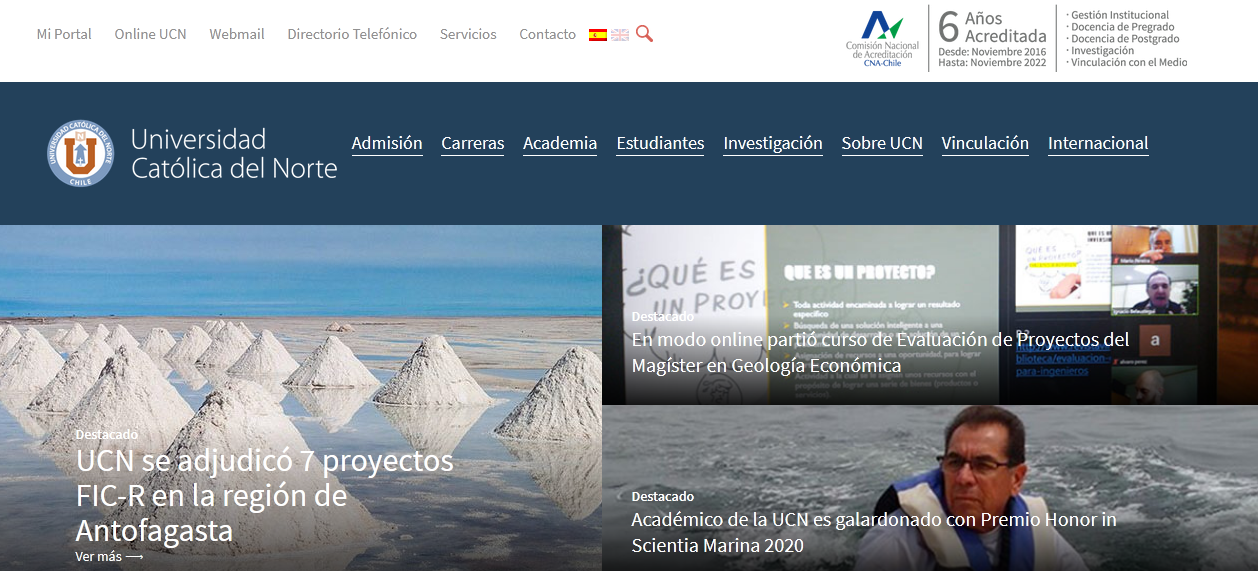
Founded in the city of Antofagasta in 1956, the Catholic University of the North was Chile’s third Catholic university and in 1964, it was established by the Government of Chile as an autonomous university and as the eighth oldest university in Chile.
It is based around two campuses: the main campus in Antofagasta and the Guayacan campus in the city of Coquimbo. The Antofagasta campus’ strengths lie in architecture, sciences (particularly geological sciences) and engineering, while Coquimbo is strong in marine sciences, business and health sciences.
Students can choose to study with one of eight faculties, four schools, 38 undergraduate programmes and 30 graduate programmes.
Its priority areas for research are mining, geology, astronomy, archaeology, social sciences, marine sciences, water resources, energy and health.
There are several museums, specialising in geology, archaeology and the Atacama Desert, which is also nearby.
Antofagasta is known as Chile’s mining capital and is recognised globally as the ideal location for astronomy – it offers the clearest skies in the world and no more than 20 cloudy days a year. It is home to several national and international observatories, as well as some of the world’s largest telescopes.
The port city of Coquimbo, meanwhile, is famed for its nearby beach resorts and is in the perfect position for studying marine science. It is surrounded by small villages, such as Pisco Elqui and Montegrande, where the famous Chilean liquor, pisco, originated.
Follow us on Facebook, Twitter, LinkedIn.








